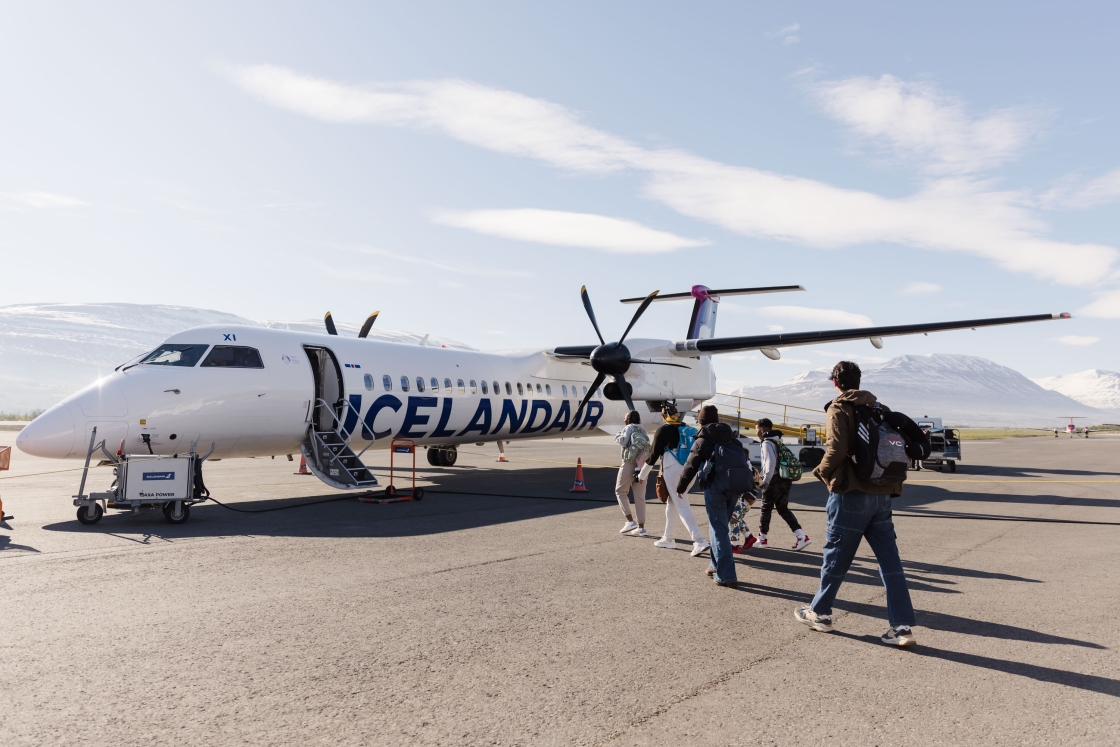News subtitle
The pilot Arctic immersion program last month was organized by the Institute of Arctic Studies and the Sustainability Office.
During a pilot “Arctic Sustainability Immersion” program in June led by the Sustainability Office and the Institute of Arctic Studies, 10 undergraduates learned about Arctic policy and sustainable development through site visits in Akureyri and Húsavik, two towns on the northern coast of Iceland. (Photos by Chris Johnson)
Photos
Image

Students get a bird’s eye view while participating in a whale-watching tour in Húsavík. Historically home to a whaling economy, Húsavík has recently transitioned to ecotourism as its main economic driver.
Image

Guðmundur Sigurðarson, executive director of Vistorka, talks to students about sustainability initiatives and challenges in and around Akureyri in northern Iceland. Vistorka plans and implements sustainability solutions in energy, waste, and transportation and provides community education on climate change and sustainable behaviors.
Image

Guðmundur Sigurðarson, executive director of Vistorka, takes students on a “green tour” of the sustainability Initiatives in Akureyri. The town relies on distribution of geothermal hot water, pumped from the ground to heat the city, and this super-insulated pipe is a key piece of the infrastructure.
Image

Tom Barry, dean of school at the University of Akureyri, explains Arctic governance and Iceland’s role within international Arctic issues. Akureyri is home to two of the Arctic Council’s working groups and is a hub for Arctic collaboration and research.
Image

From left, Institute of Arctic Studies Program Manager Sanaa Siddiqi, Hamza Najam ’26, and Tess Bruett ’27 roll an excavated tire as part of a beach cleanup effort with Ocean Missions. The nonprofit in Húsavík works to protect the marine environment in the Arctic Ocean from the impacts of climate change and tourism.
Image

Erika Wu ’27 takes a closer look at a natural geothermal vent on a hike through the Námafjall Geothermal Area in one of Iceland’s most geothermally active regions.
Image

Students meet with a representative in the Akureyri mayor’s office to understand the town’s unique history and importance in Iceland. Akureyri participates in the Arctic Mayor’s Forum, which gives local governments a voice in the development of the Arctic.
Image

Beam Lertbunnaphongs ’25 inspects sustainably grown microgreens at Rækta Microfarm in Akureyri, Iceland. Students learned about the challenges of creating a sustainable food system in Arctic communities.
Image

Students on the Dartmouth trip chat outside the University of Akureyri.
Image

Students and staff share in a reflection discussion overlooking the fjord in Akureyri. These daily reflections helped students to synthesize the experiences each day and make new connections in the themes of the trip to Iceland.
Image

The students board a domestic flight in Akureyri to Reykjavik. Though it is a small country, Iceland’s active geology and harsh climate leave large areas undeveloped.
Image

A representative from ON geothermal power plant gives a tour of geothermal electricity and hot water production. The company is also working to use Iceland’s bedrock structure to capture and store atmospheric carbon underground.